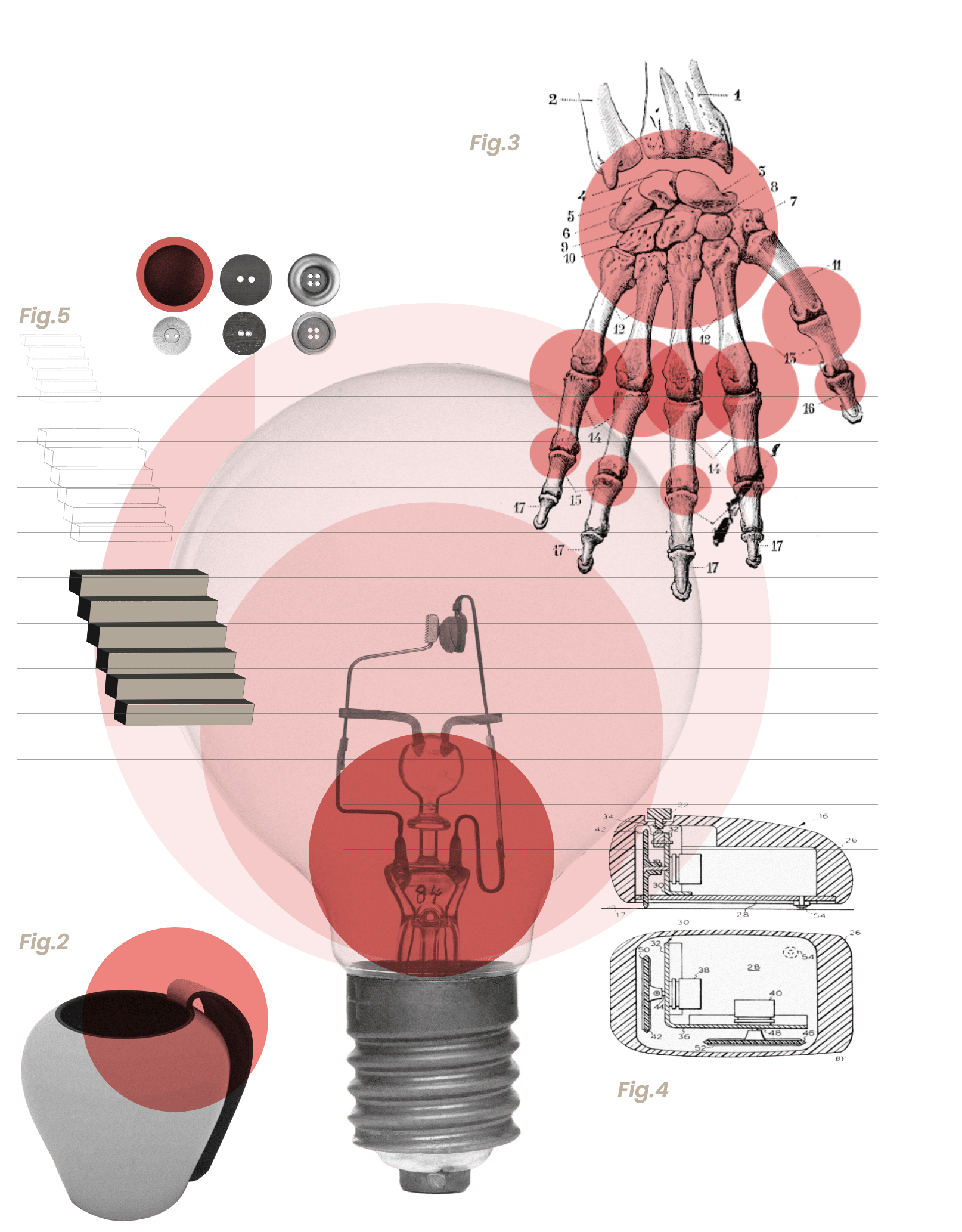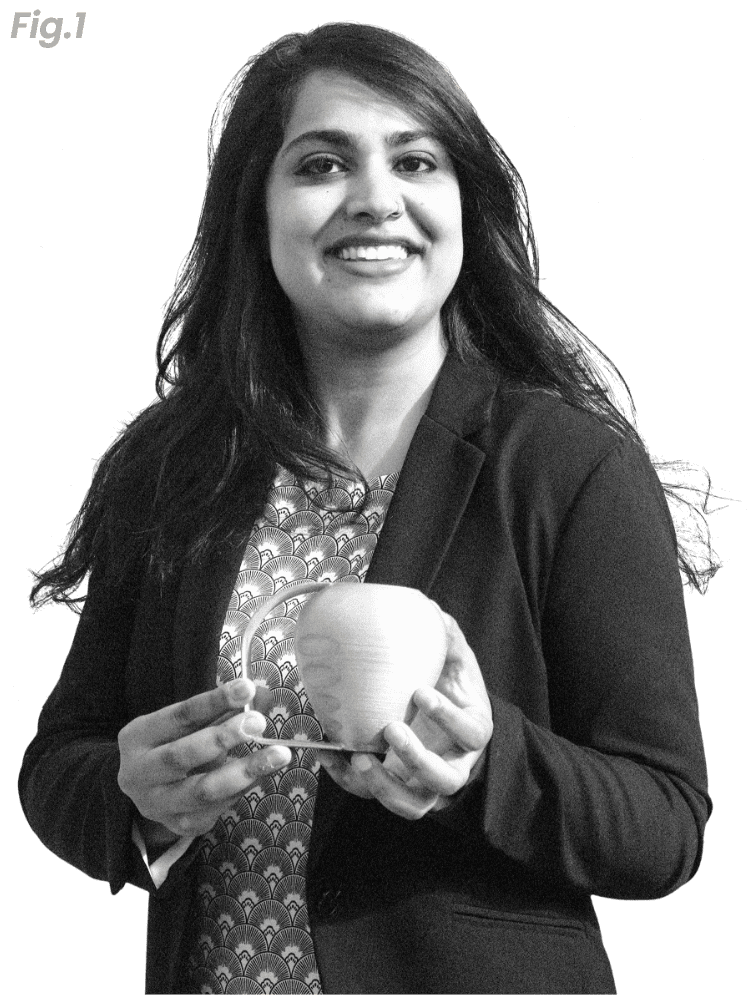Story 5
#5


There’s a world of inventions created to make up for lost functions
There’s a world of inventions created to make up for lost functions
What does a mug got to do with Parkinson’s? Or an algorithm? Or a shirt? Probably, more than you think.
Just ask Mileha Soneji, who that, little by little, saw one of the most important figures in her life — her uncle — stop wanting to drink coffee in public, because of the tremors in his hands.
At which point she decided to put her (own) hands to work and created a mug that didn’t spill.

Fig. 1 Mileha Soneji
Fig. 2 No Spill Cup, © Mileha Soneji
Fig. 3 Hand bones
Fig. 4 Computer mouse patent, D.C. Engelbart, 1970)
Fig. 5 Staircase Illusion © Mileha Soneji

Or Benjamin Gottemoller, an American programmer who, when Parkinson’s stopped his grandfather from controlling the mouse cursor, created an app that reduced the oscillations produced by the tremors, in real time.
Or Maura Horton, an entrepreneur with a similar — and equally inspiring — story: after her husband was diagnosed with Parkinson’s at age 48
(and was no longer able to dress himself because of the buttons), she decided to create a clothing brand which, quite simply, replaced buttons — on pants, shirts, etc.— with simple and effective magnetic closures.
And this just to give you a (small) idea of the inventions that, all over the world, are making a (huge) difference in the life of people with Parkinson’s.
Fig. 1 Mileha Soneji
Fig. 2 No Spill Cup, © Mileha Soneji
Fig. 3 Hand bones
Fig. 4 Computer mouse patent, D.C. Engelbart, 1970)
Fig. 5 Staircase Illusion © Mileha Soneji
ON/JUN22/G/084
date of preparation June 2022
ON/JUN22/G/084
date of preparation June 2022




















